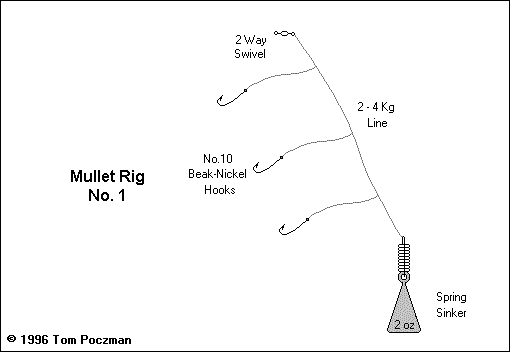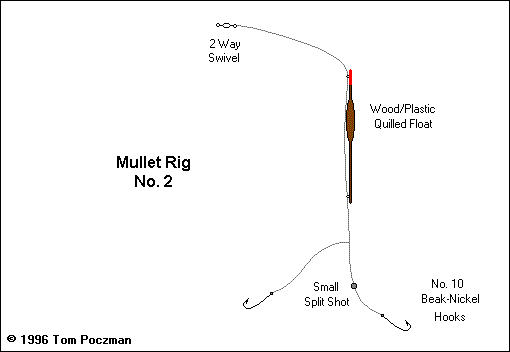Mullet
Introduction
Aldrichetta forsteri
There are four varieties of mullet available in Sth Australia, the most common being the sand and yellow-eyed mullet. The yellow-eyed mullet is one of the most nutritious fish in the sea. It is a scavenger, hence the black stomach lining. The sand mullet can grow to about 40cm, and yellow-eyed a little bigger. They can be found in the shallows along beaches throughout the state, travel in large schools at certain times of the year, and can be caught in substantial quantities. The majority of the schooling fish will range from 35 to 30cm in length, with the occasional larger specimens among them.
Most fisherman are divided regarding the eating qualities of the mullet. The ocean variety tend to be cleaner than the estuary fish, and the taste is comparable to a whiting meal, should skin the fillet. They are best eaten fresh, as they do not freeze well, and soon acquire a strong fishy smell. They are excellent to smoke (as are Tommies), even after weeks in the freezer.
Mullet can be caught all year round, but are particularly active from late summer through autumn and into winter. The most productive times for catching mullet are early mornings on a run-off tide, likewise throughout the afternoon on a run-in tide. Mullet are not normally taken at night. When on the bite, they tend to give a very sharp bite, therefore it is essential that you hold the rod at all times with a tight line.
When fish are plentiful and biting well, try holding steady pressure on a hooked fish for a few seconds without retrieving. This will often result in a second or third mullet being hooked and landed on the one cast. Once a school of mullet is located from a beach, it is often possible to bring them closer to you by gradually shortening the length of your casts.
Legal Minimum Length
| Current Limit: | 21 cm | [Previous: | 21 cm] |
Bag Limit
| Current Bag Limit: | 60 per person | [Previous: | No Restrictions] |
| Current Boat Limit: | 180 per boat | [Previous: | No Restrictions] |
Type of Tackle
Use line between 2 to 4kg. Mullet can be a problem if lighter line is used, due to the line being prone to tangles while casting, as well as while the Mullet are on the bite. Lighter lines can encourage more strikes.
A rod around 1.8m is ideal for both jetty, rock and boat fishing.
Hook Selection
No.8 - 10 Beak-Nickel "Holdfast" nylon snelled hooks that come pre packed are ideal. Mullet have small mouths !
Baits Used
Minced steak (or skippy or horse meat) with added semolina and curry or garlic, Tubeworms, Tuna Flesh, Bungum Worms, Seaweed Worms.
Berley Mix
A stiff mixture of soaked pellet berley squeezed into a berley spring will disperse slowly and attract mullet to your bait. Some anglers stake hessian bags containing various berley mixes at the waters edge, small particles forming a steady berley trail for mullet schools to follow and remain in.
Rigs Used
Rig No. 1
Rig 1 is perfect for fishing off jetties, and intended for use when the mullet are feeding on the bottom. The purpose of the spring sinker is to hold a berley mix in place, and slowly disperse it within the vicinity of your hooks. When cast, take any slack out of the main line to ensure that if a bite occurs, your rod tip will bend. Fishing with this rig from a boat is awkward, due to the movement of the boat in the waves not giving you a true indicator of potential bites on the line.

Rig No. 2
This rig is ideal for boat fishing, where the float stands upright in the water, making it clearly visible to the angler. Choice of floats, whether it be a wood stemmed, or quill style is of personal preference. Constant berleying from a pot tied to the boat will ensure that you initially attract the mullet, then keep them there.

 Fishing Tip : Fishing Tip : |
|
| Why not contact fishSA.com about your Fishing Tip |
|
|